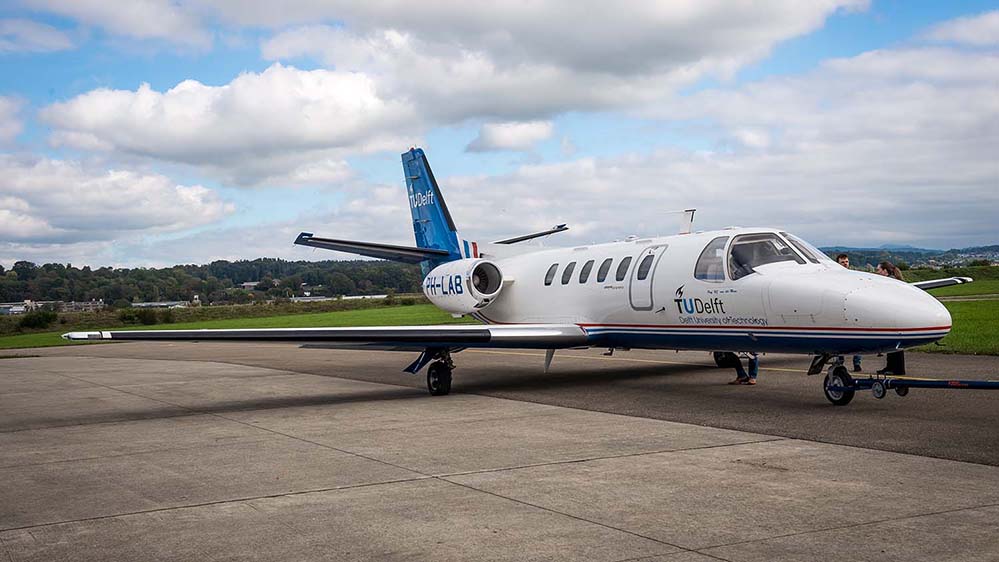New Flight Platform Increases Flexibility in Research
The UZH Space Hub and the Swiss Sky Lab have been carrying out parabolic flight campaigns since 2015. The weightlessness achieved during these flights enables researchers to test technology and applications that might later be used in satellites or on the International Space Station (ISS). Researchers can also conduct experiments on new production methods, processes and scientific questions in zero gravity – and all this can be done without ever having to leave the Earth’s atmosphere. To date, 30 research projects have benefited from the weightlessness produced by the Swiss Parabolic Flights. Parabolic flights provide scientists with a cost-effective, low-threshold way of testing their research approaches and innovative technologies in weightlessness at an early stage of development.
The 6th Swiss Parabolic Flight Campaign includes tests for the Akademische Raumfahrt Initiative Schweiz (ARIS) to develop a nanosatellite, an experiment involving autonomous drones for future Mars missions, an experiment on human tissue production in weightlessness, and a basic research experiment to study the “genomic code” of gravity.
New research aircraft
Unlike in previous campaigns, the latest campaign will use a Cessna Citation II research aircraft. The small jet, which can carry up to eight investigators and their equipment and is operated by the Royal Netherlands Aerospace Centre (NLR), will complement the larger Airbus A310 ZERO-G. “Through the NLR and its research aircraft, we want to offer highly flexible, cost-effective and quick access to microgravity. It’s the first time that the researchers can determine the parabolas and flight profile themselves. This makes weightlessness highly accessible, almost like using regular equipment in a lab,” explains Oliver Ullrich, UZH space medicine expert and director of the UZH Space Hub. The high flexibility of the NLR also significantly reduces the usual lead times. “We can now conduct experiments with only a few weeks’ notice.”
Oliver Ullrich isn’t the only one who believes in the Swiss Parabolic Flights’ potential to create added value and boost Switzerland’s standing as a hub for research and technology in space. The Swiss Air Force and the Federal Council consider scientific parabolic flights to be in the public interest. On 31 August 2021, the Swiss federal government, the canton of Zurich and the local municipalities signed a joint synthesis report for the transformation of the airfield area in Dübendorf, which lists parabolic flights as one of the key research platforms of the airfield’s use.
